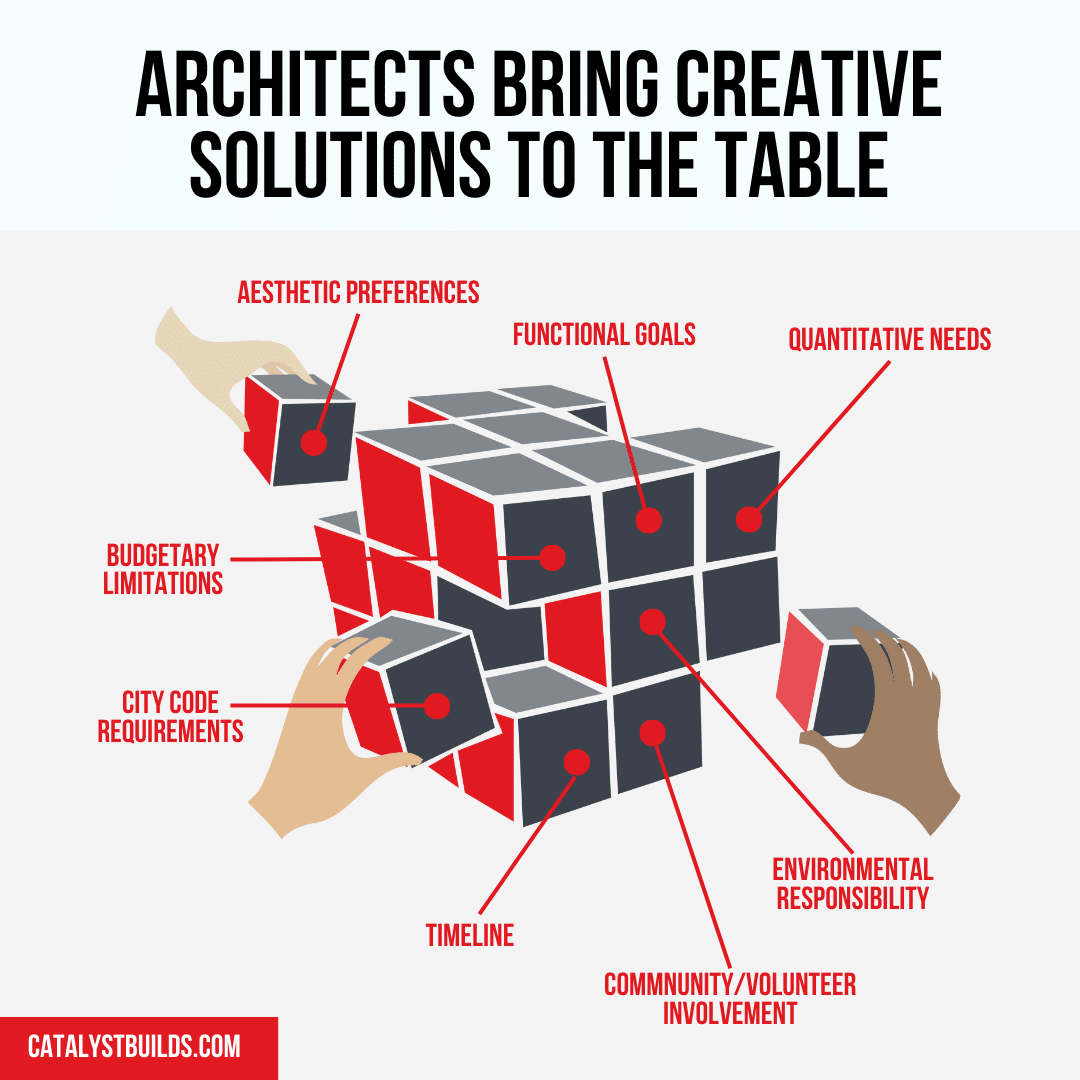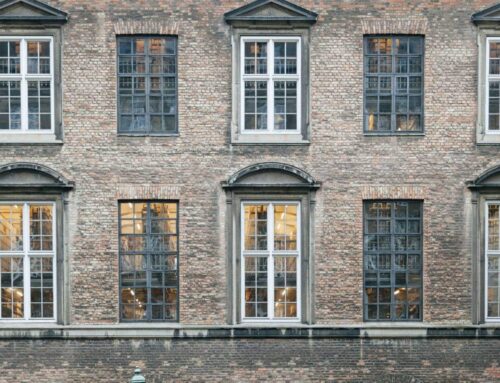Don’t you love delays? Long lines at the grocery store, highways that transform into parking lots, flights that push back your scheduled departure – these are things dreams are made of.
If we’re talking about nightmares, that is!
It’s one thing when a delay costs you time and betrays your impatience. It’s another when unnecessary, preventable delays cost you time, money, and a world of frustration.
This is particularly true in construction projects. Delays threaten every building project. Many details are out of your control, but not all of them. I’ve even seen projects get delayed because of toilet paper.
You read that sentence right.
Regulations are on the books for how far a toilet paper dispenser must be from a toilet. If things aren’t in place, an inspector can require the entire bathroom to be rearranged – down to one-quarter of an inch!
It’s because of these reasons – and many more – that if you’re considering a new construction project, you need an architect. Here are our five reasons why
5 Key Reasons to Hire an Architect for Your Building Project
You don’t have to go it alone. We can help you avoid setbacks and achieve your goals. Here are five ways an architect will bring your vision to life.
1. Architects Help You See What Matters Most
Many people don’t engage in multiple building projects throughout their life. Whether it’s a new church building, school, or home – a new construction project tends to be a once-in-a-lifetime proposition for most people.
But not architects.
This is a massive advantage for you. Architects can cut through the noise and help you see what matters most in a construction project. A helpful architect will clarify critical components of your project, such as:
- Needs VS Wants
- Aesthetic Preferences and Quantitative Needs
- Creative solutions to avoid the expense of building
For example, a church may need to incorporate handicap accessibility into its building project. This can include ramps, elevators, and more. The need for handicap accessibility must take priority in the budget and dictate what options are available in the “wants” category.
Further, your organization needs to blend your quantitative needs and aesthetic preferences. You may need to add four classrooms and 10,000 square feet to your current facility. That’s quantitative. But what do you want those rooms to feel like? That’s aesthetic. Both must be considered before breaking ground.
A truly helpful architect will help you understand all these considerations. Ultimately, you may determine that you don’t need to build at all.
I met with a church that was considering a construction project because they thought they had a space issue. With a bit of probing, it became clear that space was not an issue at all.
They had a scheduling issue.
This particular church had a jam-packed building – but only twice a week. All of their programming was constrained to Sundays and Wednesday evenings. By offering different church programs on other days throughout the week, they could avoid unnecessary construction projects.
Sometimes, the most helpful thing an architect does is help you NOT build a building!
2. Building Codes Require an Architect’s Expertise
Contrary to Ron Swanson’s opinion on the TV show Parks and Rec, you can’t just “do what you want” in your building project.
You have to abide by the legal building codes.
There are lots of them. Some are remarkably detailed, down to how far away a toilet paper dispenser must be from the toilets.
Each local principality has its own codes on the books that impact your new building. Consideration must be made to the number of parking spots available, how many handicapped accessible parking spots are included, how far the building is from the road, exterior signage, and more.
Beyond local codes, your project must also fall within the requirements for building materials. It’s cumbersome and complex to complete a project by the book, but it matters. The codes are in place to ensure people’s safety and the sustainability of the environment.
In some situations, you may be required to hire union laborers or minority or female workers. Contractors may also receive benefits for employing residents on your job.
You don’t have to memorize the codes. You just need to follow them. An architect can take this burden off your plate and prevent your building project from being sideswiped by preventable delays.
3. Architects Create Buildings AND Educate Clients
Like the Catalyst Construction team, I like to provide my clients with understanding and options. You should be able to choose between “good, better, and best” when determining what solutions can meet your needs.
Consider an HVAC system. Every building needs one. But which one do you need? Many factors must be processed.
- Cost
- Energy Efficiency
- Preventative Maintenance
- General Maintenance
- Technological Preferences
- Engineering Requirements
In some situations, it makes the most sense to buy “the knock-off brand.” But in other cases, you will save money over the long haul if you pay a higher initial cost.
What’s the best decision? A thoughtful architect can help you process your options to make an educated decision.
4. Architects Bring Creative Solutions to the Table
Architects do far more than provide sketches and renderings. We’re problem solvers. We’re listeners.
Every construction project has constraints. Many have competing priorities. Our job is to take all of these and arrange them like a Rubix Cube so that you get the best possible outcome.
Beyond helpful guidance, you may legally need an architect. Due to building codes’ complex and nuanced nature, many principalities require an architect’s plan before granting building permits.
5. Architect Designs Are Tailored to Your Building Needs
If you see a Frank Lloyd Wright building, you know it.
Photo cred: architecturaldigest.com
Some professionals in the construction industry have a very distinct style. That can be a good thing. They know what they do, and they do it well.
But you may have preferences that don’t align with their style or suit your needs. That leaves you with a few options. You can compromise certain preferences. You could try to persuade the architect to branch out of their area of expertise.
Or you could find a different architect.
No one wants their day to get delayed by toilet paper issues. The right architect can ensure that won’t happen to your building project! While your new building should be as unique as you, there are still constraints and codes that you must work within.
You need an architect to get your project to the finish line. But that’s not how you get the project to the starting line. You need a trusted guide like Catalyst Construction to ensure you’re taking the right steps in the right order. Talk to Catalyst first, and we can hit the ground running!








